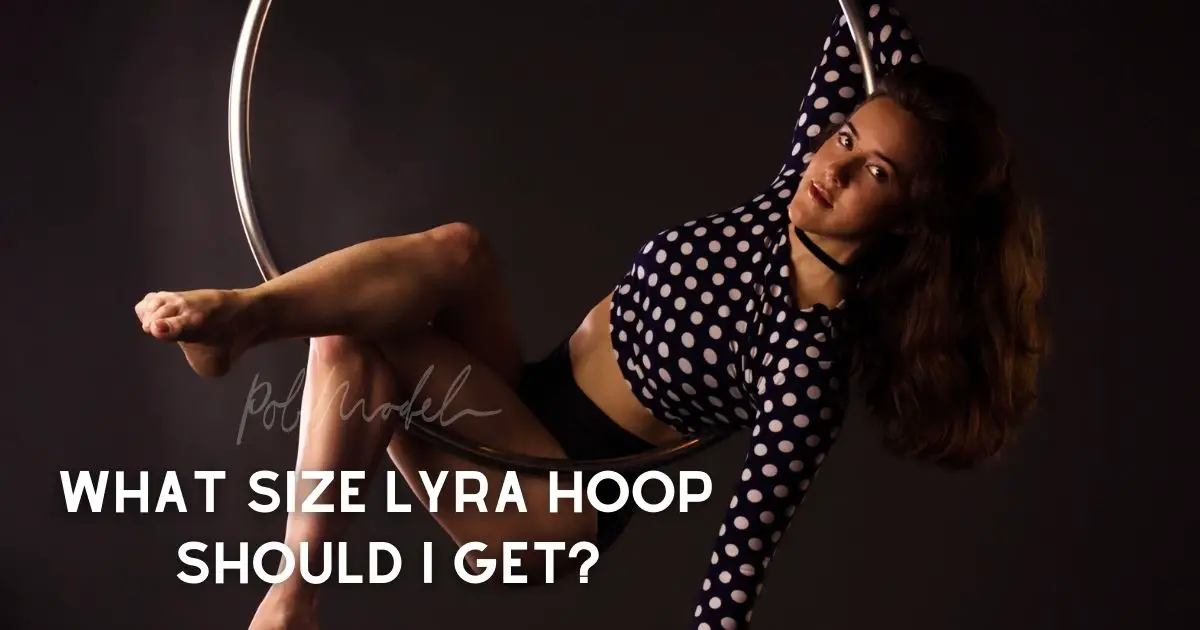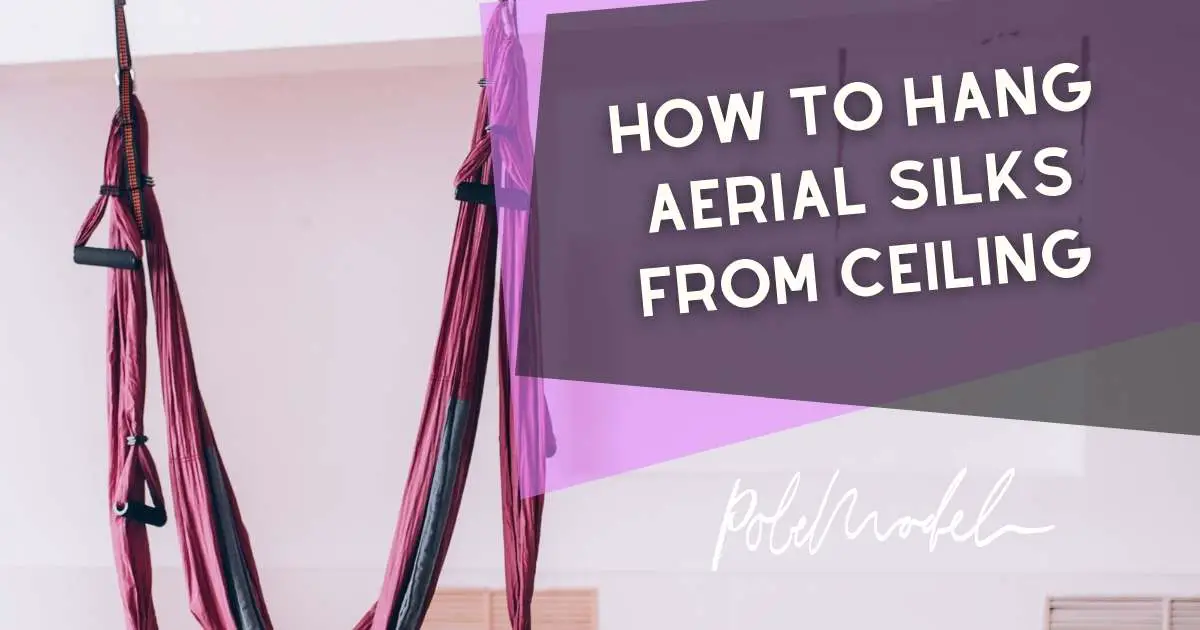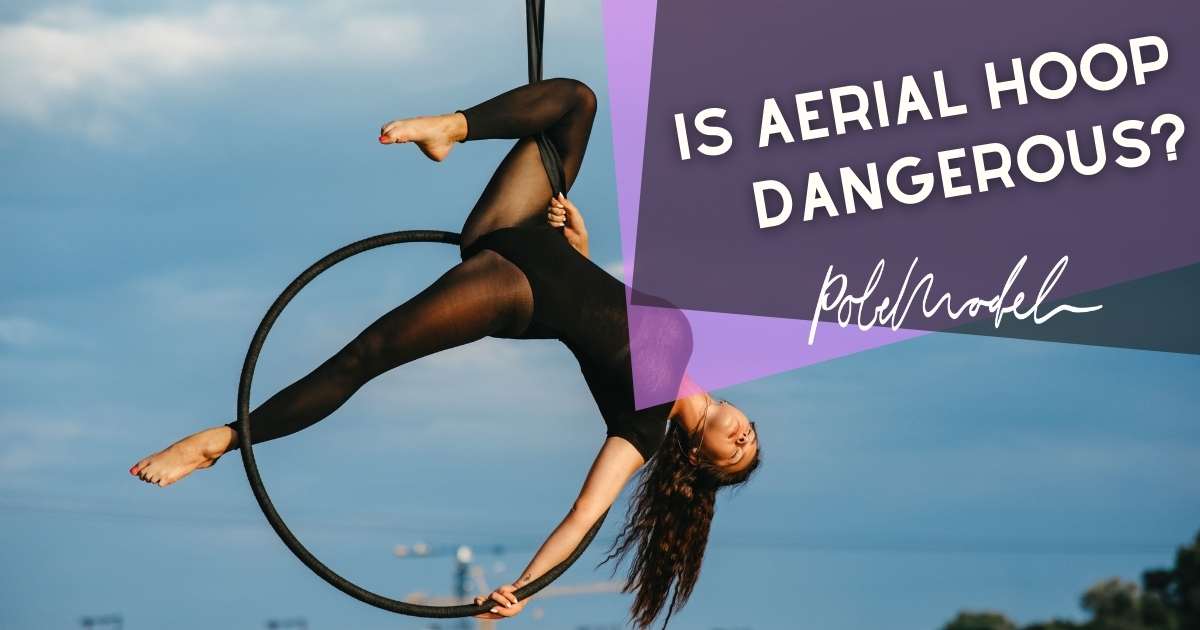Are you thinking of getting into Lyra, but keep asking the question, ‘what size Lyra hoop should I get’? If so, this is the post for you. The right size Lyra, or aerial hoop, is important not only to keep you comfortable but also to keep you safe.
It’s relatively easy to figure out the size of aerial hoop you need once you know how, but your choice also depends on your experience, your body proportions, which tricks you like, and your personal preference.
What Size Lyra Hoop Should I Get?
It depends on you! Choosing the right hoops is crucial not only for safety, but also for getting the most out of your performances and practice. Here’s a guide on selecting the right size hoop for you.
You should choose the nearest sized hoop to your final centimeter measurement. Our recommendation is to choose the larger of two hoop sizes if you are unsure.
If you know someone who can assist:
- Measure from the seat to the top of your head in centimeters while sitting on a straight-backed chair.
- For a perfect internal hoop measurement, add 5cm.
- Add another 5cm to account for the steel tubing’s thickness
- The upper half of your body should be measured and added to by 10cm.
Eg. A measurement of 80cm plus 5cm plus 5cm equals 90cm. You should use a 90cm hoop.
If no one is available to assist:
- Place your back against the wall and sit on the floor.
- Hold the tape measure end between your spine and the wall with one hand.
- In centimeters, measure from the floor to the top of your head.
- Calculate your optimum hoop size by adding 10 cm
Hold a pencil on top of your head and lightly mark the wall, if this seems too difficult. Simply add 10cm to the measurement from the floor to the mark. We are not responsible for ruining your walls, so if you don’t want pencil marks on your wall, ask someone to assist you and follow the steps above.
Are There Any Other Methods To Find The Perfect Hoops For You?
It allows you to catch your feet on top of the Lyra when doing tricks like half and pike back balances, wine glasses, half hip holds, and lots more.
Lyras that are too large can potentially cause your feet to miss the top of the hoop, resulting in a dangerous fall. You can also hit your feet when using an aerial hoop that is too small, particularly when performing elbow and barrel rolls.
Depending on your body, you may get slightly different results from these two methods. Using method 1), resident aerial hoopers are able to reach 100cm (39″) while using method 2), they can reach 95cm (37″) Due to her many moves that require proper foot placement, Hannah prefers method 2) as she is an advanced aerialist.
The size of your aerial hoop and why it is important should now be clear to you. It is a good choice if you are looking for Lyras for use in a class, because you do not know the height of most of the people using them. The most popular size is 95cm (37″), which falls in the middle of our range.
Does the Size of the Lyra Hoop Matter?
If the Lyras are too large, your feet may miss the top of the hoops, potentially leading to a dangerous fall. When you perform moves like elbow rolls and barrel rolls with an aerial hoop that is too small you risk hitting your feet, causing injury.
Conclusion
Choosing the right size hoop is also a matter of preference, depending on the tricks you like to perform. Most people choose to use 90, 95, and 100 cm hoops. Beginners and children can find it easier to maneuver a smaller hoop, and large hoops are ideal for tricks requiring more headroom.
For more quality content like this, be sure to check out the Pole Model Youtube Channel!
See you there 🙂









